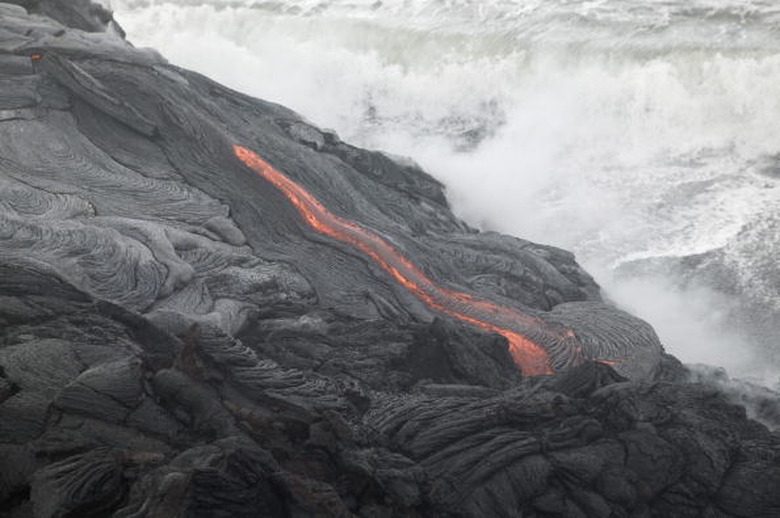What Type Of Volcano Is Not Associated With A Plate Boundary?
The vast majority of volcanic activity occurs where tectonic plates collide, called convergent boundaries, or spread, called divergent boundaries. However, there is a special class of volcanoes that form within plates. These inter-plate volcanoes are known as hotspot volcanoes. Hotspot volcanoes that form under continental plates are called super volcanoes, representing the most powerful and violent volcanoes on Earth.
Hotspot Volcanoes
Hotspot Volcanoes
Unlike volcanoes associated with plate boundaries, hotspot, or inter-plate, volcanoes are located within tectonic plates. They are fueled by localized sources of high heat energy known as thermal plumes. These plumes of molten rock, called magma, rise from the lower asthenosphere. They are much hotter than the typical lithosphere rock. This magma melts the surrounding area of the crust, creating magma chambers and, if the magma reaches the surface, hotspot volcanoes. As the plate moves over the hotspot, a sequence of volcanoes is formed. Tracing the sequence, from oldest to newest, identifies both the location of the hotspot and the relative motion of the tectonic plate above it.
Inter-Oceanic Hotspot Volcanoes
Inter-Oceanic Hotspot Volcanoes
Inter-oceanic hotspots form under oceanic plates. The magma that is formed in these magma chambers is basaltic in nature, having a low viscosity and low water content. This type of magma primarily produces very fluid lava flows. Pressure does not tend to build up in inter-oceanic magma chambers; rather, their corresponding volcanoes tend to continuously ooze runny lava. This process produces shield volcanoes, featuring broad, gently sloping sides. Mauna Loa and Kilauea on the Hawaiian Island chain are examples of inter-oceanic hotspot volcanoes.
Inter-Continental Hotspot Volcanoes
Inter-Continental Hotspot Volcanoes
Inter-continental hotspots form under continental plates. The melting of continental crust produces a very different magma composition, one that is very felsic and thick in nature. Pressure builds in these magma chambers until the crust fractures over the chamber. This fracturing instantly releases the pressure, allowing gas trapped in the magma to rapidly expand. This rapid expansion results in a large, violent and explosive eruption. As the chamber rapidly empties, the surface over the chamber collapses, forming a large, bowl-like caldera. Inter-continental hotspot volcanoes are known as super volcanoes, because they produce the largest volcanic eruptions. The Yellowstone super volcano is an example of an inter-continental, hotspot volcano.
Results of Super Volcano Eruptions
Results of Super Volcano Eruptions
When inter-continental super volcanoes erupt, they produce pyroclastic flows that can extend for hundreds of miles and eject massive amounts of material that can cover the entire Earth in a measurable amount of ash. This large ejection also leads to a large amount of suspended material in the atmosphere, producing global cooling. The crater atop Mount St. Helens is 2 square miles; however, the Yellowstone super volcano caldera is 1,500 square miles. The most recent Yellowstone eruption, 640,000 years ago, ejected 250 cubic miles of material, approximately 8,000 times as much as the 1980 eruption of Mount St. Helens. The Yellowstone eruption 2.1 million years ago ejected 588 cubic miles of material, almost 20,000 times that of the 1980 Mount St. Helens eruption.
Cite This Article
MLA
Bennett, Doug. "What Type Of Volcano Is Not Associated With A Plate Boundary?" sciencing.com, https://www.sciencing.com/type-not-associated-plate-boundary-8481721/. 24 April 2017.
APA
Bennett, Doug. (2017, April 24). What Type Of Volcano Is Not Associated With A Plate Boundary?. sciencing.com. Retrieved from https://www.sciencing.com/type-not-associated-plate-boundary-8481721/
Chicago
Bennett, Doug. What Type Of Volcano Is Not Associated With A Plate Boundary? last modified March 24, 2022. https://www.sciencing.com/type-not-associated-plate-boundary-8481721/
